Goaltide Daily Current Affairs
Current Affair 1:
Rare Disease in India
Recently, it was reported that the application of the majority of patients suffering from Lysosomal Storage Disorders (a rare disease) has been pending with the Union Ministry of Health and Family Welfare for several months.
So, here we will learn about
- Lysosomal Storage Disorders and
- Rare Disease.
Lysosomal Storage Disorders
LSDs are inherited disorders resulting from a lack of specific enzymes that break down certain lipids (fats) or carbohydrates (sugars) in the body cells.
If a person does not have enough of one of these enzymes, the body cannot break down the fat or carbohydrate targeted by enzymes for recycling. These fats or sugars accumulate in cell lysosomes where enzymes are active, disrupting normal function and causing lysosomal storage disorders.
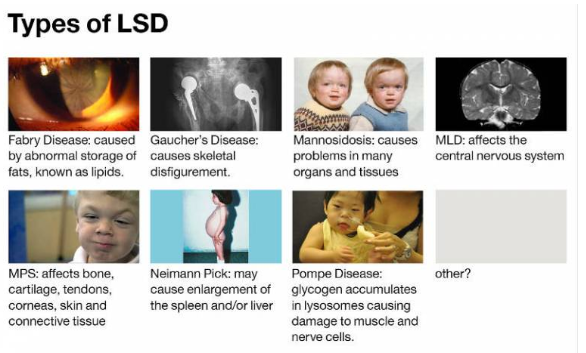 Nothing for than this is required.
Nothing for than this is required.
Now we will learn about Rare Diseases.
A rare disease is a health condition of low prevalence that affects a small number of people compared with other prevalent diseases in the general population.
We will take you to the statement made on International Rare Disease Day in 2018.
The vision of the Sustainable Development Goals is a world in which no one is left behind, including people who suffer from rare diseases. Just because a disease affects a small number of people does not make it irrelevant or less important than diseases that affect millions.
Rare diseases present fundamentally different challenges from those of more common diseases, especially for diagnosis. The small number of patients, the logistics involved in reaching widely dispersed patients, the lack of validated biomarkers and surrogate endpoints, and the lack clinical expertise and expert centres all present significant barriers.
Rare diseases became known as orphan diseases because drug companies were not interested in adopting them to develop treatments.
Now, do we have any Rare Disease Policy in India?
The Modi government had approved the National Policy for the Treatment of Rare Diseases in 2017, on the directions of the Delhi High Court.
The policy was meant to address diseases that affect a very small number of people but are chronic, life-threatening and in many cases result in some kind of hindrance to normal life.
There are around 8,000 rare diseases across the globe, of which 450 have been reported in India. They include haemophilia, thalassemia, sickle-cell anaemia and lysosomal storage disorders such as Pompe disease, cystic fibrosis, Gaucher’s disease, and spinal muscular dystrophies.
India has about 70 million patients of rare diseases.
But………
In 2018, the policy was withdrawn. The National Policy on Rare Disease, 2017 was withdrawn and sent to review committee. Currently, no policy in operation on Rare Disease.

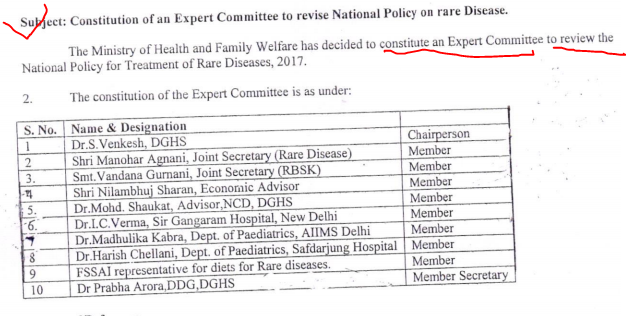
Current Affair 2:
Indian Ocean Rim Association (IORA)
Recently, the 19th Indian Ocean Rim Association (IORA) Council of Ministers (COM) Meeting was held in Abu Dhabi (UAE) under the theme of “Promoting a Shared Destiny and Path to Prosperity in the Indian Ocean”.
What is Indian Ocean Rim Association (IORA)?
The Indian Ocean Rim Association is an inter-governmental organisation which was established on 7 March 1997. It aimed at strengthening regional cooperation and sustainable development within the Indian Ocean region through its 22 Member States and 9 Dialogue Partners.

The vision for IORA originated during a visit by late President Nelson Mandela of South Africa to India in 1995, where he said:

Its Secretariat is based in Cyber City, Ebène, Mauritius.
Also learn about Indian Ocean Dialogue (IOD)
The Indian Ocean Dialogue (IOD) is a flagship initiative of the Indian Ocean Rim Association (IORA), with its origins in the 13th Council of Ministers meeting, held in November 2013 in Perth, Australia.
The first IOD was held in Kerala, India in 2014. 6th Indian Ocean Dialogue (IOD) was recently held in December 2019.
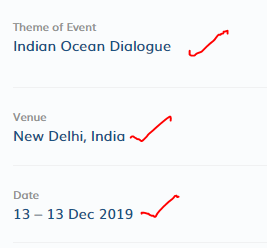
Almost half of the world’s container ships, and two-thirds of the world’s oil shipments pass through the Indian Ocean Rim region, which is home to around 2.7 billion people. The IOD is IORA’s premier 1.5 track forum for dialogue between academia and officials on strategic issues of interest and concerns facing the Association. The term track 1.5 diplomacy is used by some analysts to define a situation where official and non-official actors cooperate in conflict resolution
What they discuss here?
Discussions includes far ranging topics such as economic cooperation, maritime safety and security, blue economy, human assistance and disaster relief, etc.
Current Affair 3:
International Human Rights Day
The International Human Rights Day is observed every year on 10th December. The day marks the adoption of the Universal Declaration of Human Rights (UDHR) by the United Nations General Assembly (UNGA) in 1948.
The theme for 2019 is “Youth Standing up for Human Rights”.
We will learn two things here:
- Protection of Human Rights Act,1993
- Universal Declaration of Human Rights
Protection of Human Rights Act,1993
India has enacted the Protection of Human Rights Act,1993 to ensure the protection of human rights. Recently, several amendments were made to the Protection of Human Rights Act,1993 through Protection of Human Right (Amendment) Bill, 2019. These are:
- Eligibility: Not only a person who has been Chief Justice of India but also a person who has been a judge of the Supreme Court is also made eligible to be appointed as Chairperson of the Commission in addition to the person who has been the Chief Justice of India.
- Strength: It increases the members of the Commission from two to three of which, one shall be a woman.
- Members of National Commission: Apart from Chairperson of four National Commissions (Scheduled Castes, Scheduled Tribes, Women and Minorities), it also intends to include Chairperson of the National Commission for Backward Classes, Chairperson of the National Commission for the Protection of Child Rights and the Chief Commissioner for Persons with Disabilities as deemed members of the Commission.
- Tenure: The amendment reduces the term of the Chairperson and Members of the Commission and the State Commissions from five to three years and shall be eligible for re-appointment.
Universal Declaration of Human Rights
Universal Declaration of Human Rights was proclaimed under UNGA resolution in Paris. It set out, for the first time, fundamental human rights to be universally protected.
It states that ‘All human beings are born free and equal in dignity and rights. They are endowed with reason and conscience and should act towards one another in a spirit of brotherhood.
The Universal Declaration is not a treaty, so it does not directly create legal obligations for countries. However, it is an expression of the fundamental values which are shared by all members of the International community.
Office of the High Commissioner for Human Rights (OHCHR)
The Office of the High Commissioner for Human Rights (UN Human Rights) is the leading UN entity on human rights.
It was established in 1993 and is a part of the United Nations Secretariat. OHCHR is headquartered in Geneva.
UN Human Rights plays a crucial role in safeguarding the integrity of the three interconnected pillars of the United Nations – peace and security, human rights and development.
It also provides assistance in the form of technical expertise and capacity development in order to support the implementation of international human rights standards on the ground.
How you will relate Indian and United Nation Human Rights Declaration?
India gained independence in 1947 after decades of our freedom struggle and The United Nations was also born in 1945 after a remarkable series of global initiatives that began with the birth of the League of Nations in 1920.
It is not only the dates of the struggle for Indian independence and the institutional build-up towards a world organisation, the UN, that coincide. There is between the birth of India and the UN, a remarkable degree of affinity and purpose of ideas, concepts and fundamental principles used to buttress the global search of peace, self-determination and human rights, which, it was hoped, would govern the role, and behavior of states.
Current Affair 4:
1948 Genocide Convention
Recently, Gambia has filed an application at the International Court of Justice (ICJ), accusing Myanmar of violating the 1948 Genocide Convention.
We will learn here:
- International Court of Justice
- Genocide Convention
Genocide Convention
The Convention on Genocide was among the first United Nations conventions addressing humanitarian issues. It was adopted in 1948 in response to the atrocities committed during World War II . UN recognized that "genocide is an international crime, which entails the national and international responsibility of individual persons and states." The Convention has since then been widely accepted by the international community and ratified by the overwhelmingly majority of States.

Lack of appropriate legislation in India
Though India ratified the convention in 1959, there is no legislation on the subject. The absence of legislation on the subject was justified by union minister of state for home affairs, Kiren Rijiju, in Rajya Sabha (March 2, 2016) on grounds that the 1948 Convention, by virtue of India’s accession, is an integral part of the Common Law of India. Further, it was claimed that both substantive and procedural criminal law provide an appropriate legislative framework to deal with acts like genocide in India.
However, there is no provision in the Indian Penal Code that criminalizes killing or causing serious bodily or mental harm to individuals of a particular national, ethnic, racial or religious group, with the intent to destroy such a community in whole or in part. In other words, mass murder by specifically targeting individuals of a particular group – which is the essence of the crime of genocide – is not recognized as crime beyond murder simpliciter, and other associated crimes against the human body.
In the absence of such a legislative framework, it is hard not to conclude that India is in breach of its legal obligations.
Now, International Court of Justice
The ICJ was established in 1945 by the United Nations charter and started working in April 1946. It is the principal judicial organ of the United Nations, situated at the Peace Palace in the Hague (Netherlands).
The International Court of Justice is composed of 15 judges elected to nine-year terms of office by the United Nations General Assembly and the Security Council. These organs vote simultaneously but separately. In order to be elected, a candidate must receive an absolute majority of the votes in both bodies.
Currently, Justice Dalveer Bhandari from India is the member of ICJ.

Learn International Criminal Court also
It is governed by an international treaty called 'The Rome Statute’ which was adopted in 1998. The International Criminal Court (ICC) is the world’s first permanent international criminal court.
Headquarters: Hague, Netherlands.
India has neither signed nor ratified the Rome Statute on the International Criminal Court (ICC).
Current Affair 5:
World Habitat Award'
Recently, Odisha has won the 'World Habitat Award' for its ambitious initiative- Jaga Mission. This award is given by World Habitat, in partnership with United Nations Habitat, every year, in recognition of innovative, outstanding, and revolutionary ideas, projects, and programmes from across the world in the field of housing.
We will learn three things here
Current Affair 6:
JAGA Mission and United Nation Habitat and World Urban Forum.
JAGA Mission
Odisha Liveable Habitat Mission "JAGA" is a society under Housing & Urban Development Department, Government of Odisha.
Odisha Liveable Habitat Mission (OLHM) - "JAGA" aims at transforming the slums into liveable habitat with all necessary civic infrastructure and services at par with the better off areas within the same urban local body (ULB) and to continuously improve the standard of the infrastructure and services and access to livelihood opportunities.
United Nations Habitat or United Nations Human Settlements Programme
United Nations Human Settlements Programme (UN-Habitat) promotes socially and environmentally sustainable towns and cities. It is the focal point for all urbanization and human settlement matters within the UN system. UN-Habitat envisions well-planned, well-governed, and efficient cities and other human settlements, with adequate housing, infrastructure, and universal access to employment and basic services such as water, energy, and sanitation.
Learn Habitat- I, II and III.
United Nations Habitat was established in 1978 as an outcome of the first UN Conference on Human Settlements and Sustainable Urban Development (Habitat I) held in Vancouver, Canada, in 1976.
The mandate of UN-Habitat derives from the Habitat Agenda, adopted by the United Nations Conference on Human Settlements (Habitat II) in Istanbul, Turkey, in 1996. The twin goals of the Habitat Agenda are adequate shelter for all and the development of sustainable human settlements in an urbanizing world.
Habitat III was the United Nations Conference on Housing and Sustainable Urban Development. It took place in Quito, Ecuador, from the 17th to the 20th of October 2016.
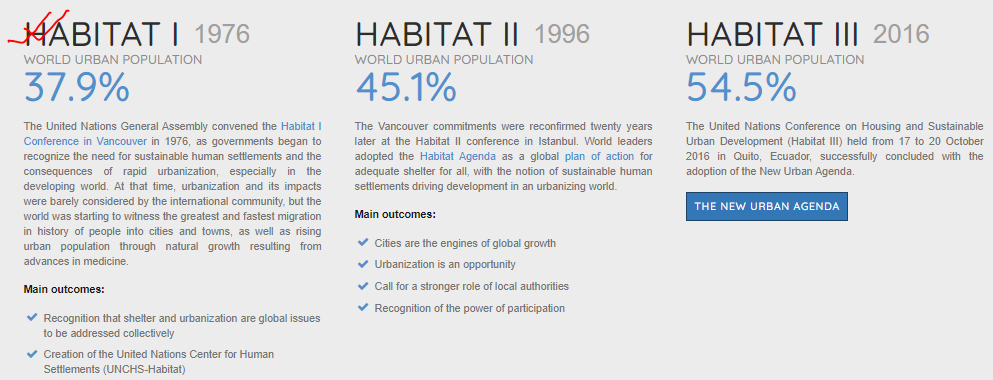
What is this new Agenda adopted at Habitat-III?
The New Urban Agenda was adopted at the United Nations Conference on Housing and Sustainable Urban Development (Habitat III) in Quito, Ecuador, on 20 October 2016. It was endorsed by the United Nations General Assembly at its sixty-eighth plenary meeting of the seventy-first session on 23 December 2016.
The New Urban Agenda represents a shared vision for a better and more sustainable future. If well-planned and well-managed, urbanization can be a powerful tool for sustainable development for both developing and developed countries.
UN-Habitat is headquartered at the United Nations Office at Nairobi, Kenya.
Also learn about World Urban Forum (WUF) which is convened by UN-Habitat
The World Urban Forum (WUF) was established in 2001 by the United Nations to address one of the most pressing issues facing the world today: rapid urbanization and its impact on communities, cities, economies, climate change and policies. Convened by UN-Habitat, the Forum is a high level, open and inclusive platform for addressing the challenges of sustainable urbanization.
The Tenth Session of the World Urban Forum (WUF 10) will be held from 8-13 February 2020 in Abu Dhabi, United Arab Emirates. This will be the first time that an Arab country will host the world’s most important conference on cities and human settlements.
India never hosted World Urban Forum.
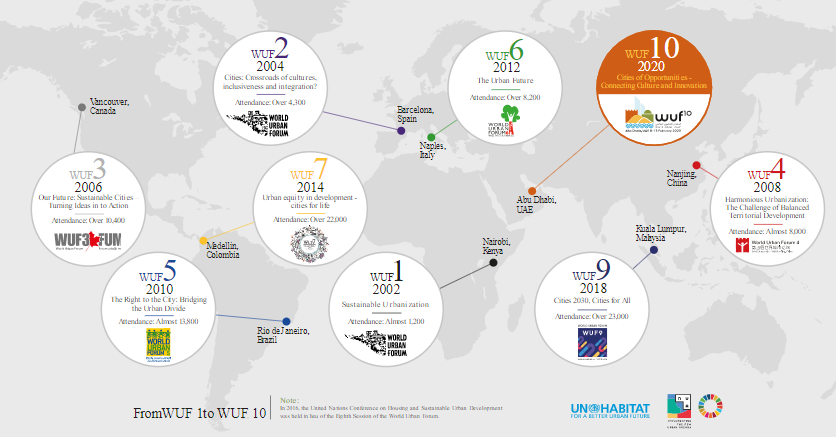
Current Affair 7:
United States Commission on International Religious Freedom
Recently, the United States Commission on International Religious Freedom (USCIRF) has raised concern over Citizenship (Amendment) Bill (CAB), 2019.
Rahu, Sonia, Owaisi also did the same. We can’t study everyone. We will study what is important for us. We will study here United States Commission on International Religious Freedom (USCIRF).
USCIRF is an independent, bipartisan U.S. federal government commission, the first of its kind in the world, dedicated to defending the universal right to freedom of religion or belief abroad. By statute, USCIRF monitors the universal right to freedom of religion or belief abroad—not in the United States — using international standards to do so, and makes policy recommendations to the President, Secretary of State, and Congress.
What is Religious Freedom defined under Universal Declaration of Human Rights?
Religious freedom is an important human right recognized in international law and treaties. Article 18 of the Universal Declaration of Human Rights affirms that: “Everyone has the right to freedom of thought, conscience and religion; this right includes freedom to change his religion or belief, and freedom, either alone or in community with others and in public or private, to manifest his religion or belief in teaching, practice, worship and observance.”
What United States Commission on International Religious Freedom (USCIRF) Does?
Issues an annual report each year. The report assesses the U.S. government’s implementation of International Religious Freedom Act (IRFA).; recommends countries that the Secretary of State should designate as “Countries of Particular Concern” for engaging in or tolerating “systematic, ongoing, egregious violations of religious freedom;”
Its recommendations are not binding and acts only as a conscience-keeper for the two branches in the US government — the legislature and the executive.
International Religious Freedom report, 2019
USCIRF releases International Religious Freedom report annually. We will only see what it talked about India.
What all it talked?
The third section of the Annual Report highlights 12 countries USCIRF categorizes as Tier 2, defined by the Commission as nations in which the violations engaged in or tolerated by the government during 2018 are serious and characterized by at least one of the elements of the “systematic, ongoing, and egregious”
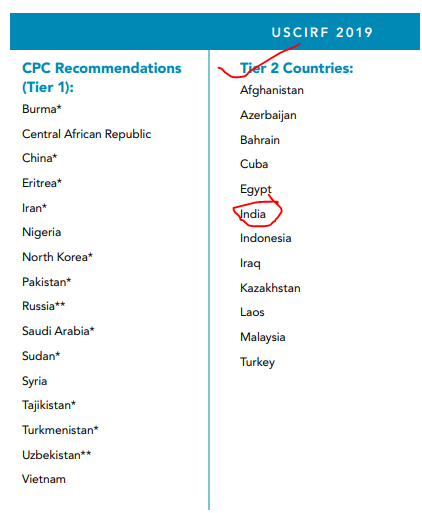


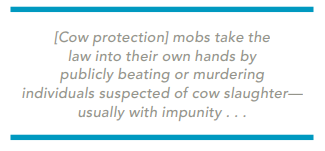

Current Affair 8:
IUCN report on oceanography
The International Union for Conservation of Nature (IUCN) released the ‘Ocean deoxygenation: Everyone's problem’ report.
It is the largest peer-reviewed study analyzing the causes, impacts and possible solutions to ocean deoxygenation.

What is Ocean deoxygenation?
Ocean deoxygenation refers to the loss of oxygen from the oceans due to climate change and other reasons.

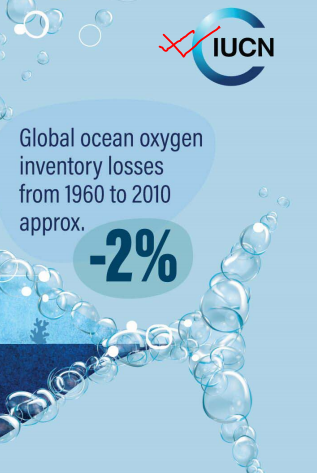
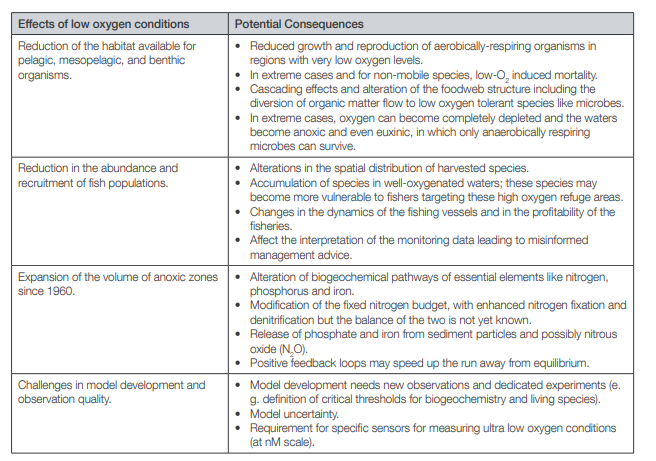
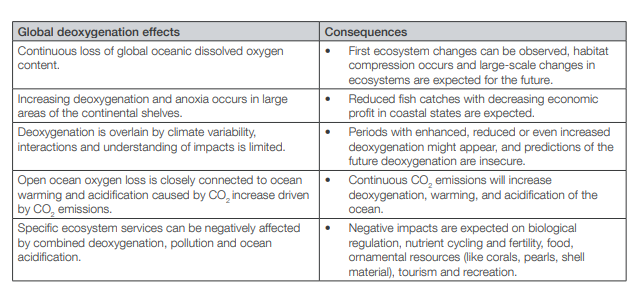
Learn about IUCN also.
The International Union for Conservation of Nature (IUCN) is the global authority on the status of the natural world and the measures needed to safeguard it.
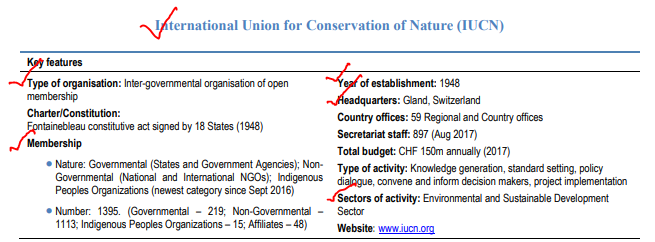
Established in 1964, the International Union for Conservation of Nature’s Red List of Threatened Species has evolved to become the world’s most comprehensive information source on the global conservation status of animal, fungus and plant species.
Every four years, IUCN convenes the IUCN World Conservation Congress where IUCN Members set the global conservation agenda by voting on recommendations and guide the Secretariat’s work by passing resolutions and the IUCN Programme.
Current Affair 9:
Human Development Index 2019
The United Nations Development Programme (UNDP) released the Human Development Report (HDR) along with Human Development Index (HDI).
The HDI measures average achievement in three basic dimensions of human development — life expectancy, education and per capita income.

India improved its rank to 129 in 2019 from 130 in 2018, out of 189 countries. Norway topped the index followed by Switzerland, Ireland, Germany, Hong Kong (Germany and Hong Kong both 4th position) and Australia.


Inequality-adjusted Human Development Index
For inequality adjusted HDI (IHDI), India’s position dropped by one position to 130.


Current Affair 10:
Indian Navy pushed back a Chinese vessel — Shiyan 1
Indian Navy pushed back a Chinese vessel — Shiyan 1— from the Andaman Sea in the Indian Ocean. Shiyan 1 is claimed to be conducting acoustic propagation experiments and hydrologic environment measurements on the high seas of the Indian Ocean.
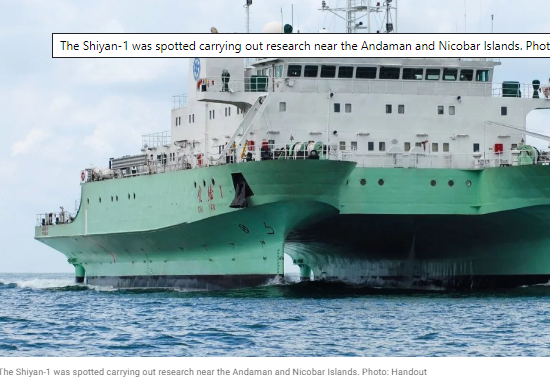
We will learn here UNCLOS
The United Nations Convention on the Law of the Sea (UNCLOS) is an international treaty which was adopted and signed in 1982 in Montego Bay (Jamaica), at the end of almost ten years of negotiations (1973-1982). It replaced the four Geneva Conventions of April 1958, which respectively concerned the territorial sea and the contiguous zone, the continental shelf, the high seas, fishing and conservation of living resources on the high seas.
The Convention has created three new institutions on the international scene :
- the International Tribunal for the Law of the Sea, headquartered in Hamburg (Germany),
- the International Seabed Authority, headquartered in Kingston (Jamaica),
- the Commission on the Limits of the Continental Shelf based in the United Nations Headquarters in New York.
Maritime Zones
UNCLOS sections the oceans, splitting marine areas into five main zones, each with a different legal status: Internal Waters, Territorial Sea, Contiguous Zone, Exclusive Economic Zone (EEZ) and the High Seas. It provides the backbone for offshore governance by coastal states and those navigating the oceans. It not only zones coastal states’ offshore areas but provides specific guidance for states’ rights and responsibilities in the five concentric zones.

- Internal Waters
Internal Waters include littoral areas such as ports, rivers, inlets and other marine spaces landward of the baseline (low-water line) where the port state has jurisdiction to enforce domestic regulations. Enforcement measures can be taken for violations of static standards while in port as well as for violations that occurred within the coastal state’s maritime zones and beyond. However, foreign vessels are not usually held to non-maritime or security port state laws so long as the activities conducted are not detrimental to the peace and security of the locale.
In the maritime security context, however, a coastal state can prevent privately contracted armed security personnel (PCASP) from entering its ports and internal waters if carriage of weapons is forbidden in national legislation. Moreover, once entering a port PCASP (and the vessel which they are aboard) can be held accountable for other violations that took place at sea if (a) they in some way impacted the port state or (b) for other reasons with the permission of the flag state.
- Territorial Sea
In the Territorial Sea, a coastal state has unlimited jurisdiction over all (including foreign) activities unless restrictions are imposed by law. All coastal states have the right to a territorial sea extending 12 nautical miles from the baseline.
In the maritime security context, it remains debated as to whether the coastal state can set and enforce laws to restrict movement of PCASP, forbid maritime security operations (including making illegal the carriage or discharge of weapons) within the territorial sea, or if enacting such legislation would be prejudicial to general freedom of navigation and the regime of innocent passage.
- Contiguous Zone
The Contiguous Zone is an intermediary zone between the territorial sea and the high seas extending enforcement jurisdiction of the coastal state to a maximum of 24 nautical miles from baselines for the purposes of preventing or punishing violations of customs, fiscal, immigration or sanitary (and thus residual national security) legislation.
In the maritime security context, this can certainly include monitoring any activities which can result in armed violence or weapons import into the state. Therefore, the coastal state can take measures to prevent or regulate armed maritime security activities out to 24 nautical miles under the reasoning that it is undertaking customs enforcement operations to prevent movement of arms into its waters/ports.
- High Seas
The High Seas, which lie beyond 200 nautical miles from shore, are to be open and freely available to everyone, governed by the principle of equal rights for all. In agreeing to UNCLOS, all state parties acknowledged that the oceans are for peaceful purposes as the Convention’s aim was to maintain peace, justice and progress for all people of the world. On the High Seas, no state can act or interfere with justified and equal interests of other states. - Exclusive Economic Zone (EEZ)
The EEZ is another intermediary zone, lying between the territorial sea (12 nautical miles) and the high seas to the maximum extent of 200 nautical miles. Although high seas freedoms concerning general navigation principles remain in place, in this zone the coastal state retains exclusive sovereignty over exploring, exploiting and conserving all-natural resources. The coastal state therefore can take action to prevent infringement by third parties of its economic assets in this area including, inter alia, fishing, bioprospecting and wind-farming.
In order to safeguard these rights, the coastal state may take necessary measures including boarding, inspection, arrest and judicial proceedings, as may be necessary to ensure compliance with the international laws and regulations.
The Convention establishes freedom of activity in six spheres: Navigation, Overflight, Laying of cables and pipelines, Artificial islands and installations, Fishing, Marine scientific research.
Freedom of navigation is of utmost importance for all, and maritime security activities can be considered part of navigational activities as they protect vessels from interference by third parties.
Current Affair 11:
Social Transfers
A common belief about social transfers is that they make their recipients lazy, decrease labour supply and do not reduce poverty. According to research that examines India’s largest social transfer programme, the public distribution system (PDS), social transfers indeed reduce labour supply, but this increases wages and alleviates poverty.
What exactly do we mean by ‘social transfers’?
What we mean is social assistance provided by public and civic bodies to those living in poverty or in danger of falling into poverty. This ‘social assistance’ can be cash or it can be a number of other things, or a combination – as we shall see later in this series of briefs. The important point, though, is that the social transfers that we refer to in this case are ‘predictable’ i.e. they are paid or distributed regularly: not as a reaction to a crisis, but as a pre-emptive initiative to allow recipients to prepare for and protect themselves in an effective way against unforeseeable catastrophes.

Current Affair 12:
Technical Textiles Industry
Technical Textiles are material and products manufactured primarily for their technical properties and functional requirements rather than for aesthetic characteristics.
Technical Textile products derive their demand from development and industrialization in a country. Given the large scale at which emerging nations are industrializing, the market for technical textiles can only be expected to grow in tandem with industrial growth in different parts of the world.
Use of technical textiles have the following benefits:
- Increased productivity in agriculture, horticulture and aquaculture fields.
- Better protection of military, paramilitary, police and security forces.
- Stronger and sturdier transportation infrastructure for highways, railways, ports and airports
- Improving hygiene and healthcare of the general public.
- In India, technical textiles hold immense growth opportunities both for the industry as well as across various applications.
In order to boost a rapid growth of the technical textile segment in the country, the government has taken following major initiatives:
- 207 technical textiles items have been brought under separate head in the Harmonized System of Nomenclature (HSN) code under the Foreign Trade Policy.
- With a view to derive the benefits of technical textiles in various fields of applications, currently 92 application areas have been identified for mandatory use across 10 Central Ministries/Departments. So far, mandatory use notifications have been issued for 68 applications.
- Bureau of Indian Standards (BIS) has developed standards for 348 technical textiles products.
- On request from the Industry, Ministry of Textiles has included 6 additional courses for technical textiles in its Skill Development Programme called Samarth.
- The work of conducting fresh baseline survey on technical textiles sector has been given to IIT Delhi.
- The Ministry has issued Public Procurement (Preference to Make in India) Order dated 23.10.2019, prescribing minimum local purchase content for technical textiles items in 10 segments for government procurement.
Current Affair 13:
Subramania Bharathi

Subramania Bharathi, also known as Mahakavi Bharathi, was a Tamil writer, poet, journalist and an independence activist.
He was a pioneer of modern Tamil poetry and is considered as one of the greatest Tamil literary figures ever. He was part of the extremist wing of the Indian National Congress party during Swadeshi movement.
Current Affair 14:
OSIRIS- Rex Mission concluded Nightingale Site
The Origins, Spectral Interpretation, Resource Identification, Security, Regolith Explorer (OSIRIS-REx) mission team concluded a site designated “Nightingale” – located in a crater high in Bennu’s northern hemisphere – is the best spot for the OSIRIS-REx spacecraft to snag its sample.
The selected sample collection site is designated as Nightingale. It is located in a crater high in Bennu’ s northern hemisphere.
There were four sites- Sandpiper, Osprey, Kingfisher, and Nightingale, were selected. Out of these, Nightingale site is chosen finally.
Site Nightingale was selected as the primary sample collection site because it holds the greatest amount of unobstructed fine-grained material. Nightingale is located in a crater near Bennu’s north pole.
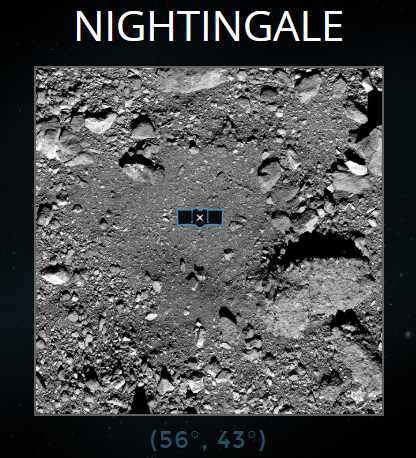
Nightingale’s regolith – or rocky surface material – is dark, and images show that the crater is relatively smooth. Because it is located so far north, temperatures in the region are lower than elsewhere on the asteroid and the surface material is well-preserved. The crater also is thought to be relatively young, and the regolith is freshly exposed. This means the site would likely allow for a pristine sample of the asteroid, giving the team insight into Bennu’s history.
About OSIRIS-Rex
OSIRIS-Rex stands for ‘Origins, Spectral Interpretation, Resource Identification, Security, Regolith Explorer’. It is a NASA asteroid study and sample-return mission. The mission's main goal is to study the evolution of the solar system and the universe.
Current Affair 15:
Accessible India campaign
Why in news?
Ministry of Social Justice and Empowerment has extended the deadline for the Accessible India campaign to March 2020 due to slow progress.

Department of Empowerment of Persons with Disabilities has launched Accessible India Campaign (Sugamya Bharat Abhiyan) as a nation-wide Campaign for achieving universal accessibility for Persons with Disabilities. It has the following three important components:
- Built Environment Accessibility
- Transportation System Accessibility
- Information and Communication Eco-System Accessibility
Lean something more.
Persons with Disabilities (Equal Opportunities, Protection of Rights and Full Participation) Act, 1995 categorically provided for non-discrimination in transport and in the built environment. It needs to be noted that the Rights of Persons with Disabilities Act, 2016 replaced the PwD Act, 1995.
United Nations Convention on the Rights of Persons with Disabilities (UNCRPD), to which India is a signatory, under Article 9 casts obligations on the Governments for ensuring to PwDs accessibility to (a) Information, (b) Transportation, (c) Physical Environment, (d) Communication Technology and (e) Accessibility to Services as well as emergency services.
Targets entailed under the three components:
- Making 50% of all the government buildings of National Capital and all the State capitals fully accessible by December 2018.
- Completing accessibility audit of 50% of government buildings and making them fully accessible in 10 most important cities/towns of States by December 2019.
- Ensuring that 50% of railway stations in the country are converted into fully accessible railway stations by March 2018.
- Ensuring that 25% of Government owned public transport carriers in the country are converted into fully accessible carriers by March 2018.
- Conducting accessibility audit of 50% of all government (both Central and State Governments) websites and converting them into fully accessible websites by March 2017.
Current Affair 16:
Phase one agreement
The United States and China have reached an historic and enforceable agreement on a Phase One trade deal that requires structural reforms and other changes to China’s economic and trade regime in the areas of intellectual property, technology transfer, agriculture, financial services, and currency and foreign exchange.
The Phase One agreement also includes a commitment by China that it will make substantial additional purchases of U.S. goods and services in the coming years. Importantly, the agreement establishes a strong dispute resolution system that ensures prompt and effective implementation and enforcement. The United States has agreed to modify its Section 301 tariff actions in a significant way. “Section 301” is one of the principal statutory means by which the United States enforces U.S. rights under trade agreements and addresses “unfair” foreign barriers to U.S. exports.
United States of America and China announced that they had finally agreed to the ‘Phase one agreement’ after a long trade war.
You have to remember this Phase One Agreement between which countries, ok?
Few steps that were taken:
- The United States suspended planned 15% tariffs that were scheduled to go into effect on Sunday on nearly $160 billion worth of Chinese goods, including cell phones, laptop computers, toys and clothing.
China canceled its retaliatory tariffs due to take effect that same day, including a 25% tariff on U.S.-made autos.
- U.S. officials say China agreed to increase purchases of American products and services by at least $200 billion over the next two years - nearly doubling U.S. exports to China - with an expectation that the higher purchases will continue after that period.
- China has committed to increase purchases of U.S. agriculture products by $32 billion over two years.
- Chinese Vice Minister of Commerce said the two countries have reached a consensus on cracking down on counterfeit goods and stepping up protection of intellectual property, but at China’s own pace.



